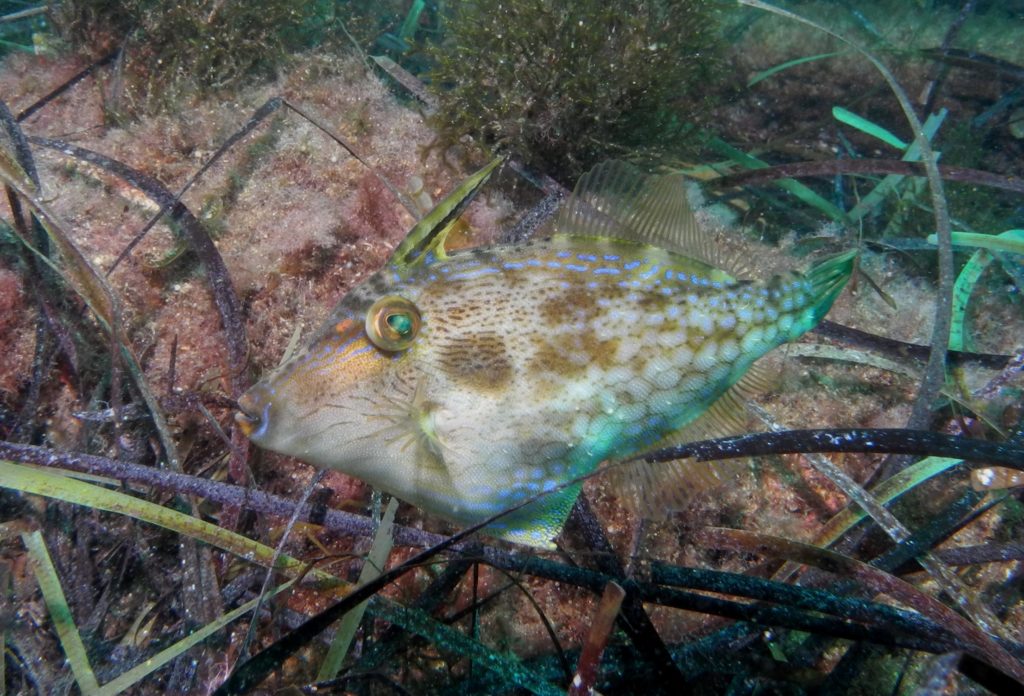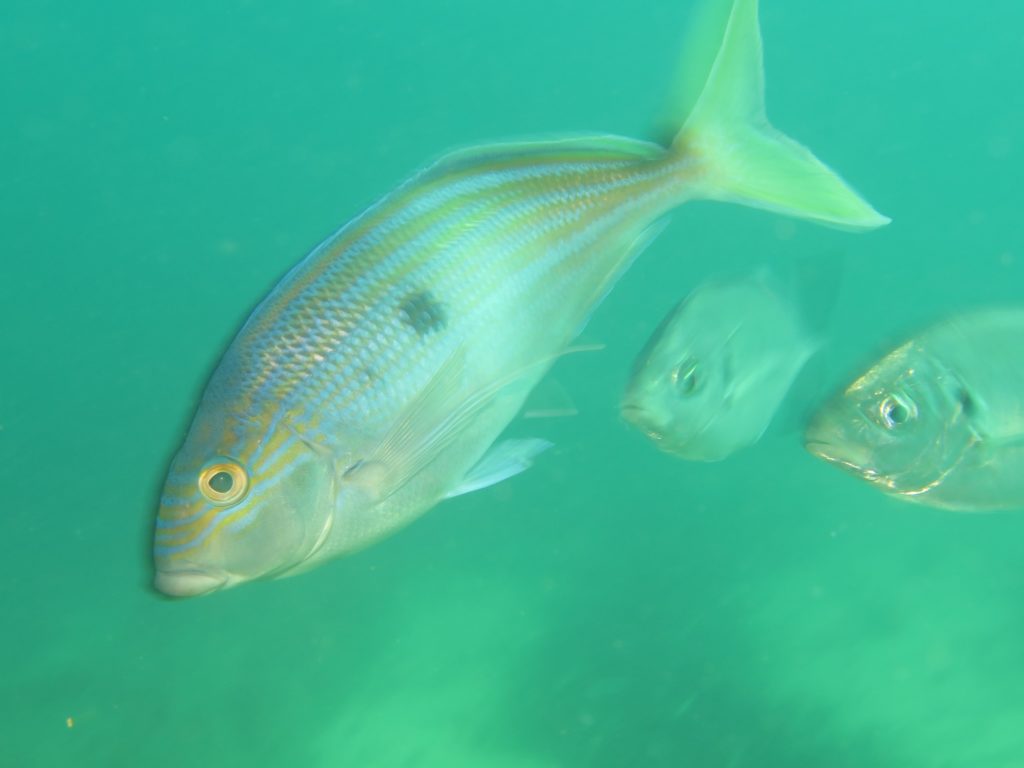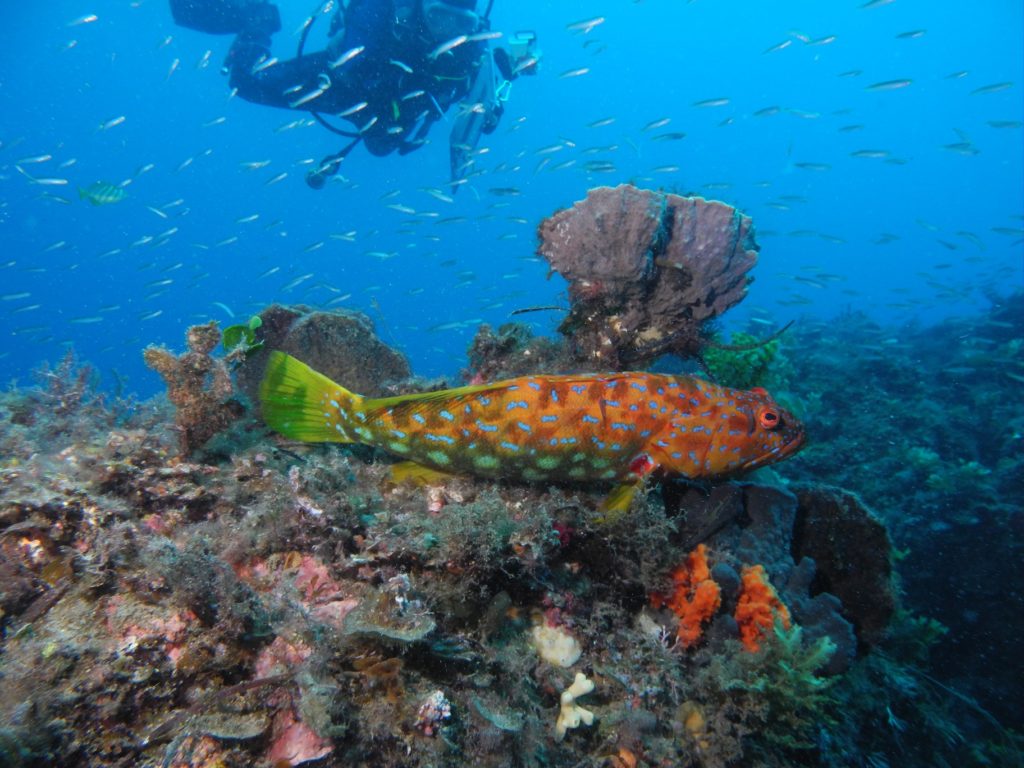In April 2009 four divers descended 18 m onto a sediment flat covered with seagrass 4 nm NW from Busselton, Western Australia. They were told to “head South from the anchor, the reef will be 30 m ahead of you”. The visibility was close to 30 m that day so it was not long before the divers spotted the reef, oh and the 1000+ school of Bullseyes hanging in a ball just above it! That dive has been mentioned numerous times since, but it has taken until now to return to it.
The site is within a proposed IUCN category II (green) zone within the Geographe Commonwealth Marine Reserve, although the rules and final zoning of the Reserve are not yet in place.
The plan was for four RLS divers, Paul Day, Ben Jones, Alicia Sutton and Anna Cresswell to survey the site established in 2009 and to establish more sites within and outside the green zone.

Finding shallow reef where you can see surface disturbance or waves is simpler than looking for low profile reef in 18 m. For this we were assisted by Kathy Murray from WA’s Department of Parks and Wildlife. Kathy is a GIS whiz and was able to direct us to available habitat and LIDAR bathymetry data. The maps produced with GPS points of potential sites were gold, and finding the reef without having those maps on board would have been a very time consuming process.
Returning to the site dived in March 2017 did not disappoint the divers, with amazing visibility and the first RLS records of Western Blue Devil (Paraplesiops sinclairi).
As the team had an existing site to survey and six potential new sites to explore, by default we had naming rights. Our second site for the day was also inside the green zone in 18 m and the team came up from the survey having all encountered numerous Southern Blue Devil (Paraplesiops meleagris). We pondered a few names for the site until Anna nailed it with Devil’s Lair. Perfect! Ben’s sharp eyes picked out Two Spot Fringe-finned Goby (Eviota bimaculata) and Alicia and Paul were treated to a school of Bluefin Tuna (Thunnus maccoyii).
After two deeper surveys, what better way to shed nitrogen than a shallow jetty dive. The team headed to Busselton Jetty for a third survey. Across two transects, 45 species of fish were recorded on method 1 including West Australian Dhufish (Glaucosoma hebraicum), of which eight were recorded. We were happy to see this iconic species protected by the sanctuary zone.
The second day of diving was called off due to near gale force winds, which blew the team into data entry and coffee mode.

When we awoke the next day, Geographe Bay was flat calm so we wasted no time getting mobile and on the water again. Our planned sites were at two areas outside of the zone with one site located just inside the state marine park boundary (Ngari Capes Marine Park). The profile of our first site was very interesting, with the reef edge almost forming circles as it runs east-west, “squiggly” as Anna commented, and so it was named. Squiggly reef tempted us with occasional Turbinaria patches along the transects and the discovery of a much larger area just beyond the end of one transect. We recorded Queen Snapper (Nemadactylus valenciennesi), West Australian Dhufish (Glaucosoma hebraicum) and Long-snouted Boarfish (Pentaceropsis recurvirostris) as well as a large Western Blue Groper (Achoerodus gouldii).
Naming the last site for the day (and the trip) was simple. Ben and Anna were buzzed during the method 1 fish swim by 50 Samsonfish (Seriola hippos) between 30cm and 75cm long, whilst Paul had a 75cm fish swim in close for an eye to eye! Hippo Creek was named.
Across the five sites, the team recorded 76 species of fish on method 1 and 35 species of invertebrates and cryptic fishes on method 2. We surveyed an existing RLS site and established another within a Marine National Park Zone and established two reference sites outside the proposed green zones. We also repeated surveys at the Busselton Jetty.
There were many interesting sightings, but an anecdotal observation that the team members all noted, was that sightings of Western Red Rock Cod (Scorpaena sumptuosa) appeared more frequent than usual. We recorded its presence at every site at an average of 2 per transect – double the average frequency recorded on RLS surveys elsewhere in the state.
Thanks to Ben Jones for the use of his boat and for skippering, Kathy Murray and DPaW for the habitat and bathymetry maps and to Alecia Macdonald at Dive Shed Busselton for air fills and friendly service.












